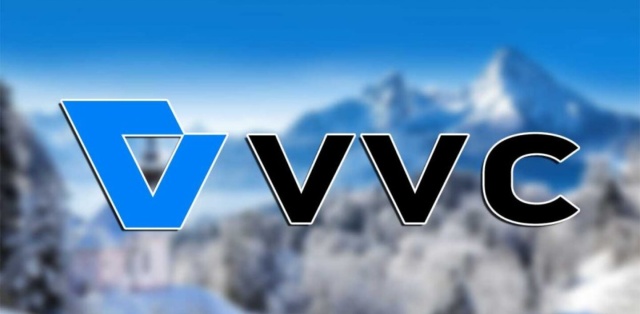In the second part of TVBEurope’s investigation into what are expected to be the key trends in the media industry during 2024, we focus on the on-going migration towards IP and how codecs continue to evolve.
Geoff Gordon, vice president, global marketing, MainConcept
It will be interesting to see how the big topic of the year AI develops in 2024. It is a story across pretty much every industry and function. How do codecs fit into what customers are doing on the AI side? There is an increasing use of codecs in a lot of customer products that have adapted AI. Will some companies become disruptors and leaders, rather than followers of the latest trend? This may be an inflection point when we see a dynamic shift in the industry players.

In TV broadcast, VVC is still in its early stages, but with new formats like VVC/H.266 we expect to see it move from trials into commercial workflows in 2024. At the same time, while VVC makes its initial entry, HEVC will greatly expand its reach, especially in broadcast thanks to patent clarity and almost full browser support with the addition of Chrome. MPEG-5 Part 2 LCEVC has emerged as the solution to improve existing codecs (enhancement vs. Base layers) to bring higher resolutions along with bitrate and cost savings, and we expect this to be a more prominent player in 2024.
Erling Hedkvist, sales and business development at arkona
We have received a significant number of requests for integration of SRT, RIST and NDI into traditional ST 2110 (and SDI) infrastructures to provide easy on/off ramps into public cloud and low-cost value-added production tools for secondary and tertiary screen applications.
Suzana Brady, SVP worldwide sales and marketing for Cobalt Digital, Inc.
We expect the migration to IP will continue which will lead to more awareness of the need for reliable video content transport solutions like RIST, and operation in the cloud. We also predict a rise in respect for sustainability and space conservation, more interest in high-density products and continued focus on automation.

At Cobalt, we will continue to listen to our customers and develop solutions that support IP and 12G, keep them at the forefront of the technology race, and always keep them prepared to tackle whatever challenges are waiting for them around the bend.
Daniel Healey, principal technologist, Caton Technology
This will be the year that media enterprises recognise that software-defined architectures and IP connectivity are firmly established and fully accepted and look to seize the benefits they bring. That means taking a completely fresh approach to the whole production process and the underlying technology.
That will mean, for example, a much greater demand for platform-as-a service (PaaS) offerings, such as a one-stop media transport service. This will pick up the audio and video at the point of origin, encode it, transport it across a secure and resilient path overlaid on the public internet or on private networks, and decode it at the point or points of delivery.
The parties will agree the quality of service – which they will expect to be demanding – and users will have a dashboard to confirm the circuit and watch the AI in action, routing and re-routing the stream in real time, without interruption.
To succeed in this new market, the PaaS provider will have to demonstrate that its end-to-end services are very low in latency and very high resilience, with complete control over technical issues like internet congestion, jitter and packet loss. In turn, they will need to work with cloud and mesh network providers to make the infrastructure better suited to media over IP.
We will also see a growing emphasis on edge computing to handle the processing tasks needed for professional media transport, like encode, transcode and decode. This will bring mission-critical video processing tasks closer than hosting in the cloud.
Sports leagues and broadcasters can use edge computing to get more feeds into their production workflows, reducing the equipment required, manpower and costs on site. Working in conjunction with cloud computing, edge processing allows for optimisation of the video workflow, tuned to the technical and commercial requirements of the specific project.
We see the potential to reduce opex costs significantly. In our experience, esports operators have seen opex reduced by as much as 50 per cent, while reducing latency from tens of seconds to under 200ms. This is literally a game-changer: a major step forward in the benefits of IP connectivity for media.
Paul Calleja, CEO and CTO of GlobalM
We only see the shift towards IP contribution and distribution continuing to snowball in 2024. More companies will start to seek cost-saving alternatives to enhance their live sports events and news events distribution. Rights holders for live events will continue to come at the last minute, and you need a flexible technology to be able to scale properly to support that. It’s what we have experienced at the Queen’s funeral and the King’s coronation, for example. Rights holders were signing deals at the last minute and we wouldn’t have been able to support that if we didn’t have an SRT and RIST service that was completely scalable in the cloud.

We also expect to see more companies looking for the ability to operate in multiple different clouds. That is where GlobalM is headed: we need to be able to offer operators the option to work on multiple different clouds simultaneously and on as many devices and open protocols as possible to have full flexibility on live events’ distribution. We’ve been doing a lot of testing and discussions around the possibilities of IP contribution and distribution with different stakeholders, and, in 2024, we also expect to see more of these companies converting into active users of the cloud.
Jonathan Morgan, senior vice president, product and technology at Perifery
In 2024, we anticipate seeing a wider adoption of edge-based solutions and on-premises object-based storage solutions. Edge-based solutions that allow large-scale data capture and content pre-processing, or local availability before sending content on to central solutions, enable far more efficient workflows. For instance, imagine a lower league football game that is auto edited at the edge before being passed back, or a pro basketball game with statistics available in real time. Edge also goes beyond sports, providing news bureaus with highly secure local storage that can make content searchable, with near zero management, while also enabling content to be sent to headquarters.
On-premises, we are increasingly seeing object-based solutions move away from “cutting edge” and into the mature technology bracket of adoption. Highly stable and performant solutions that are designed for the M&E industry are becoming AI ready. For instance, effective object storage will produce media analysis and statistics that in turn will feed AI ops and link or directly provide Kubernetes stacks.
The industry will continue to embrace edge and on-prem storage solutions. Historically, media department creatives have had significantly different technology stacks compared with IT departments, for good reason. IT has been focused on email servers, security, and user controls, whereas the media workflow requires technology that enables creatives to do their jobs! However, there is now evidence of greater convergence, if not complete amalgamation, between the departments. Reasons range from high-speed editing platforms becoming defunct as online editing becomes the norm to the requirement for heightened internal security firewalls.
Marc Risby, managing director, Boxer Systems
From an IP perspective products are more and more supporting multiple standards and I think this will continue. One of the benefits of IP is that the connector on the back of the box no longer defines the standard being used. Mixed environments will start to proliferate as customers choose the right IP solution for their specific task using the same infrastructure.
2024 will be the year that AI makes more impact in terms of more significant use in products and services. I think that in 2023 we saw the two letters on tradeshow graphics but very few companies delivering significant tools if we are honest, but this will not last long. I’m looking forward to the ride! Particularly areas of focus will be metadata enrichment and tools using natural language interfaces to simplify operation.
Mark Fisher, VP marketing and business development, Qwilt
The transition to all-IP networks will progress, with more companies migrating to IP-centric infrastructure. This will improve network performance and services, potentially accelerating the adoption of cutting-edge technologies like 5G and edge computing in the media and entertainment industry.
Further consolidation and innovation in the CDN industry will also continue into 2024. As the CDN market continues to grow and evolve, there might be further consolidation and changes among established players. The challenge for CDNs is to find new strategies, such as developing higher-margin services like security and edge computing, to remain competitive and profitable in what was and will be an ever-changing landscape.







